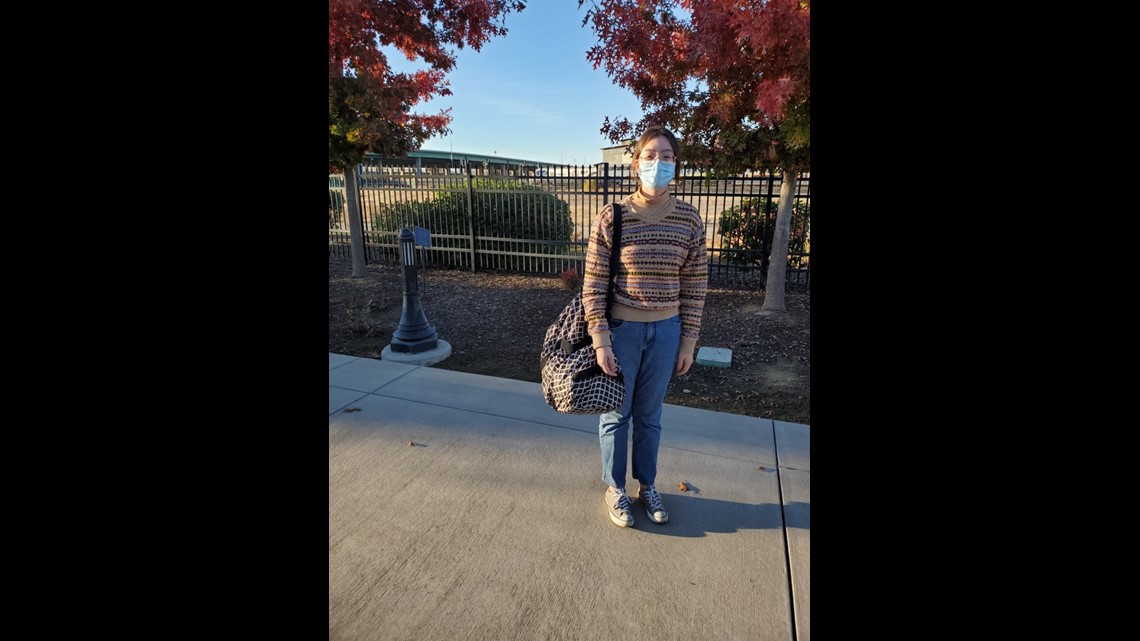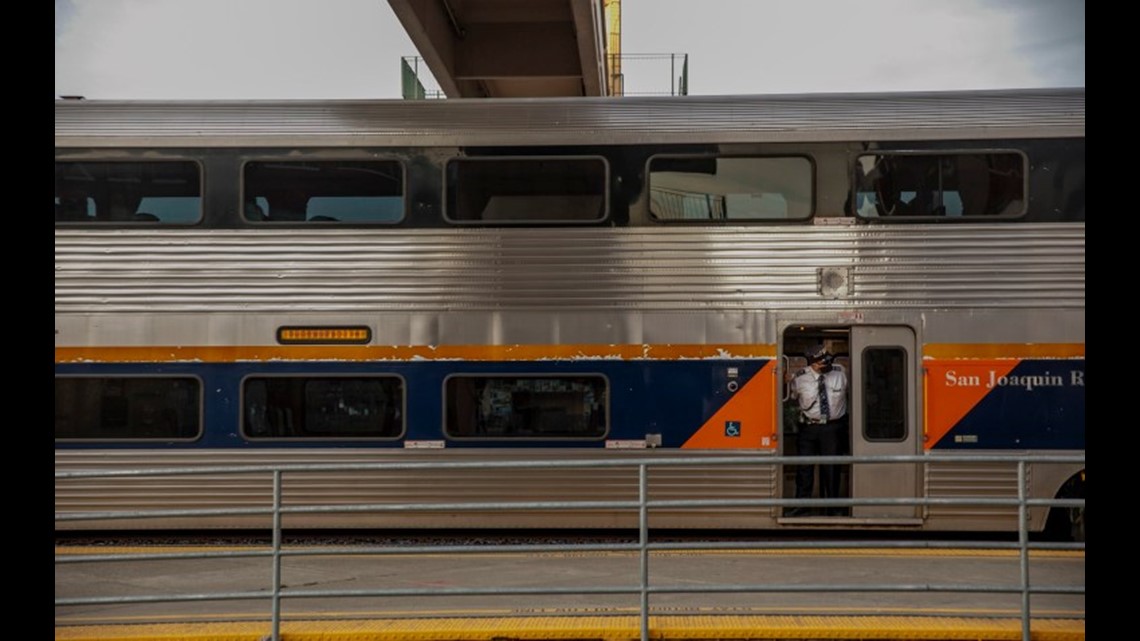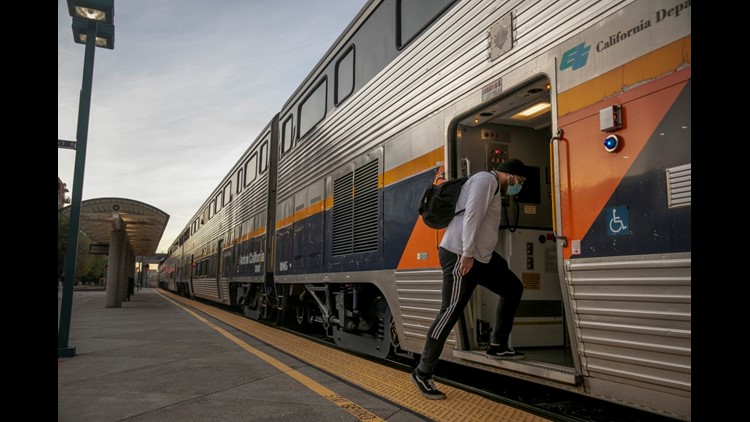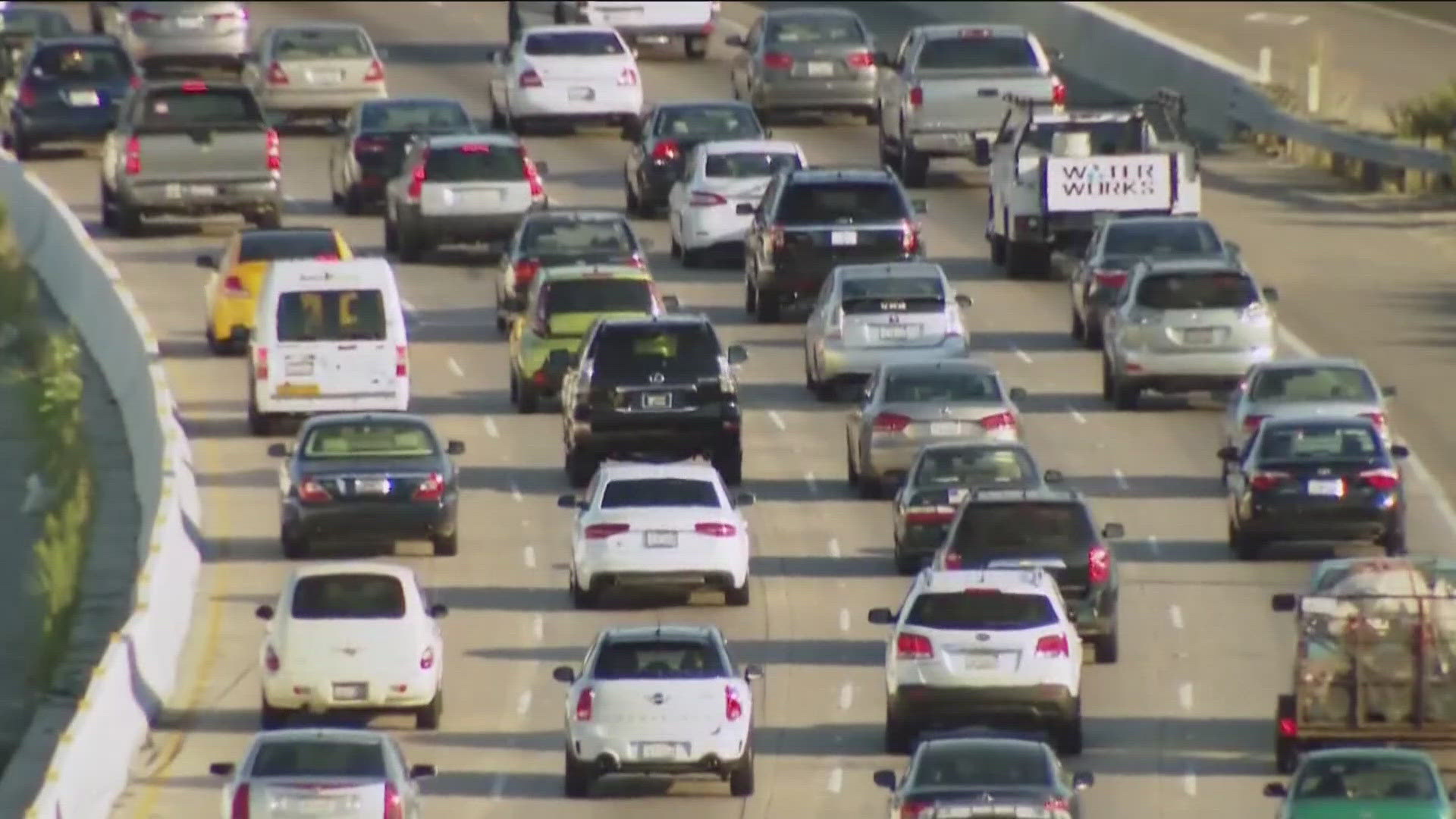Gabriella Choe has been a regular Amtrak passenger for the past four years, traveling from Oakland to Sacramento to see her parents. Before the pandemic, she rode the train nearly every other weekend.
But as the pandemic worsens, her visits are now infrequent, and she doesn’t plan on traveling for Christmas.
“My sister’s flying in for actual Christmas so I won’t be coming home for that,” said Choe, who works in an optometry office. “We’re not in the same pod.”
For many Californians like Choe, a train trip has become too risky, so they are staying home during the holiday season, which is usually Amtrak’s busiest time.
Ridership on Amtrak train routes has plummeted nationwide, triggering major cuts in service and causing about $800 million in losses for the already-struggling rail service.
“It’s pretty dire,” said Donna DeMartino, managing director of the Los Angeles-San Diego-San Luis Obispo Rail Corridor Agency (LOSSAN), which operates the Pacific Surfliner that travels from San Luis Obispo to San Diego. “With so few people riding, we have very little in the way of fares that we’re collecting.”
Amtrak has asked Congress for nearly $5 billion to help keep its nationwide routes running for the next year.
That’s more than double the amount that Amtrak normally receives. Amtrak President and CEO William J. Flynn cited “the dramatic loss in ridership and revenue that Amtrak experienced due to COVID-19…We have seen that our ridership is not returning as quickly or at the levels that we had hoped for.”
While most of Amtrak’s funding comes from the federal government, California pays, too. The state spent $114 million last year to support its three routes: the Pacific Surfliner, the San Joaquins and the Capitol Corridor, which combined carried 5.66 million passengers in 2019.
Ridership nationally has dipped to around 25% of pre-pandemic levels, Amtrak announced in late November. All three of California’s routes are still struggling with low numbers of passengers.
Slowly rebounding
In March, ridership on the Pacific Surfliner dropped 90%. Now about 1,300 customers a day ride the train — about an 80% decrease from last year.
The route has cut its service in half. The Surfliner is the nation’s second most popular Amtrak route; almost 3 million passengers traveled on it in 2019, and many of them use it to visit amusement parks and sporting events. But Disneyland and other parks are closed, sporting events have few or no fans and many colleges allow students to learn from home.
This year, the Wednesday before Thanksgiving, 2,000 passengers rode the Surfliner. Last year? Nearly 14,000. The same low numbers are expected for Christmas.


But DeMartino remains optimistic about the Surfliner, especially because a vaccine is on its way.
“We run a beautiful service all along the coast of California. I think we have arguably one of the most beautiful routes in the world and people love to travel along the Surfliner,” she said. “We believe our service will be one of the fastest to rebound.”
The Capitol Corridor, which runs from San Jose to Auburn, hit its low point in ridership in April, about 5% of normal, said Rob Padgette, managing director of the Capitol Corridor Joint Powers Authority that manages the train. Service was slashed, dropping from 15 daily round trips to five.
Since then, ridership has slowly crept up, but has only reached about 15% of what it was last year. The route is now running at about 55% of its regular service.
The Capitol Corridor is preparing for another dip in ridership during the holidays as COVID-19 cases continue to rise in California. But, Padgette said, “I don’t think we’re going to cut service again.”
“Ridership is pretty stable right now,” he said. “We do carry people that work at Amazon, that work at hospitals and people who go in for cancer treatments. There are people who rely on our service.”
In the Central Valley, service also has been slowly rebounding, said David Lipari, marketing manager for San Joaquin Joint Powers Authority. The agency manages the San Joaquins route, which stops in Bakersfield, Fresno and the Bay Area.
“A lot of that is due to the fact that the San Joaquins serve a lot of disadvantaged folks and people that need the service for essential travel,” Lipari said. “They either don’t have a car or don’t have a reliable vehicle to get themselves to their end destination and really before the pandemic and during the pandemic this is the way they get around.”
The San Joaquins bottomed out at 10% of ridership levels in April, Lipari said, but in October, it rose to about 35% of last year’s ridership. Service was cut from seven daily round trips to four, and the train no longer makes stops in Sacramento and Lodi. The agency expects numbers to decline during the COVID-19 surge.
$1 billion not enough
To survive the early stages of the pandemic, Amtrak received $1 billion in CARES Act funding in April. But it’s not enough. Congress has just begun debating the 2021 federal budget, including the $4.9 billion request from Amtrak to retain service and another $5.2 billion for construction and capital investments.
“Insufficient funding levels could force Amtrak to reduce its workforce by an additional 2,400 jobs as we scale back capital projects (approximately 775 jobs) and because our state partners have advised us that they would likely further reduce their train service (approximately 1,625 jobs),” CED Flynn wrote in his letter to Congress in October.
“State partners have advised Amtrak that they will be forced to reduce service by up to roughly 65% compared to pre-COVID service levels because state payments will increase to unaffordable levels,” he wrote.
For the Pacific Surfliner, fare revenue normally pays about 70% of operating costs, DeMartino said, and the rest is paid by the state. Its board approved putting capital project work on hold and if necessary, using those funds to keep trains moving, DeMartino said. The agency might also have to dip into savings.


To cut costs, all three routes have reduced staff at train stations. The Pacific Surfliner and the San Joaquins no longer allow checked baggage because of health guidelines, and the Capitol Corridor stopped allowing checked baggage several years ago.
“Our goal is absolutely to keep service as it was, at least at this reduced level, for as long as we possibly can,” DeMartino said.
Amtrak requires riders to wear masks while onboard. In California, the routes also have increased train cleaning, discontinued food service and discouraged riders from eating while travelling.
For riders like Margaret Henderson, 60, the train feels safe enough to travel from San Mateo to Sacramento.
“I’m travelling because my boyfriend lives here and this will be our first time spending our birthdays together,” she said. “I’m a cancer survivor so we wanted to spend our day together.”
Henderson said she’s been cancer-free for almost a year. She frequently sanitizes her hands and keeps her mask on during trips.
“I like taking the train because I really feel safe,” she said. “I’ve had no problems. So far so good.”



